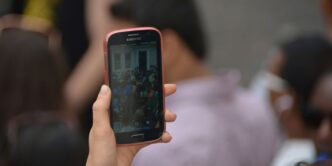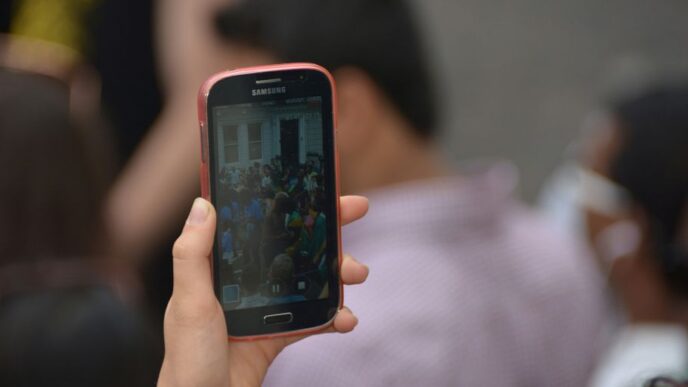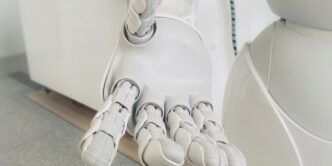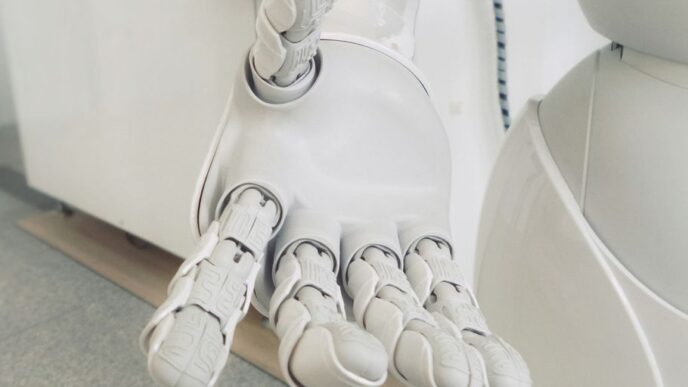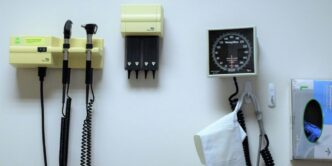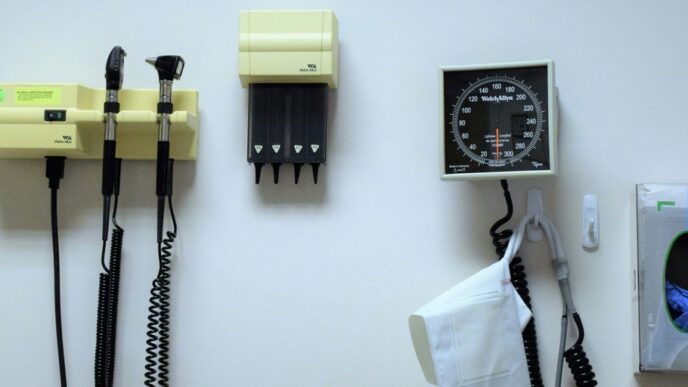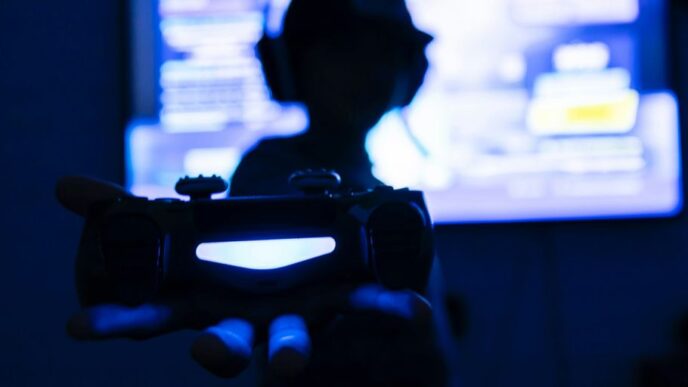The healthcare industry is undergoing a profound transformation driven by the Internet of Things (IoT). IoT technology, which involves connecting devices and systems to the internet to collect and share data, is revolutionizing the way healthcare is delivered. From wearable health monitors to smart hospital equipment, IoT is enhancing patient care, improving outcomes, and streamlining operations. This article explores how IoT is revolutionizing healthcare, highlighting the key technologies, benefits, challenges, and future implications of this transformative trend.
The Rise of IoT in Healthcare
The integration of IoT in healthcare has been facilitated by advancements in sensor technology, wireless communication, and data analytics. IoT devices can collect real-time health data, monitor patient conditions, and communicate with healthcare providers, making it possible to deliver more personalized and efficient care. The proliferation of smartphones and other connected devices has also played a crucial role in driving the adoption of IoT in healthcare.
Key Technologies in IoT-Driven Healthcare
Several key technologies are central to the IoT revolution in healthcare:
- Wearable Devices: Wearable health monitors, such as smartwatches, fitness trackers, and biosensors, are among the most common IoT devices in healthcare. These devices can track vital signs, physical activity, sleep patterns, and more, providing valuable data for both patients and healthcare providers.
- Remote Patient Monitoring: IoT-enabled remote monitoring devices allow healthcare providers to monitor patients’ health conditions from a distance. These devices are particularly beneficial for managing chronic diseases, post-surgical recovery, and elderly care, as they enable continuous monitoring and timely interventions.
- Smart Medical Equipment: IoT technology is being integrated into various medical devices and equipment, including infusion pumps, ventilators, and diagnostic machines. These smart devices can collect and transmit data, enhancing their functionality and improving patient safety.
- Connected Inhalers: For patients with respiratory conditions such as asthma or chronic obstructive pulmonary disease (COPD), connected inhalers equipped with IoT sensors can monitor medication usage and provide real-time feedback, helping to optimize treatment plans.
- Smart Pills: Ingestible sensors, or smart pills, can track medication adherence and monitor digestive health. These tiny sensors transmit data to external devices, providing insights into a patient’s condition and treatment effectiveness.
- Hospital Management Systems: IoT is also transforming hospital operations through smart management systems. These systems use connected devices to track equipment, monitor environmental conditions, and manage inventory, improving efficiency and reducing costs.
Benefits of IoT in Healthcare
The adoption of IoT in healthcare offers numerous benefits, including:
- Improved Patient Outcomes: IoT devices enable continuous monitoring of patients, allowing for early detection of health issues and timely interventions. This leads to better management of chronic diseases, reduced hospital readmissions, and improved overall patient outcomes.
- Enhanced Patient Engagement: Wearable devices and mobile health apps empower patients to take an active role in managing their health. By providing real-time feedback and personalized insights, these technologies encourage healthier lifestyles and better adherence to treatment plans.
- Remote Care Delivery: IoT facilitates remote patient monitoring and telemedicine, making it possible to deliver high-quality care to patients in remote or underserved areas. This not only improves access to healthcare but also reduces the burden on healthcare facilities.
- Operational Efficiency: IoT technology streamlines hospital operations by automating tasks, optimizing resource utilization, and improving workflow management. This leads to cost savings, reduced administrative burdens, and enhanced patient care.
- Data-Driven Decision Making: The vast amount of data generated by IoT devices provides valuable insights for healthcare providers. Advanced data analytics can identify patterns, predict health trends, and support evidence-based decision-making, leading to more effective treatments and better patient care.
- Improved Medication Management: IoT-enabled smart pills and connected inhalers help ensure patients take their medications as prescribed. This improves medication adherence, reduces the risk of complications, and enhances treatment efficacy.
Case Studies: IoT Enhancing Patient Care
Case Study 1: Remote Monitoring for Chronic Disease Management
One of the most significant impacts of IoT in healthcare is in the management of chronic diseases such as diabetes, hypertension, and heart disease. For example, patients with diabetes can use continuous glucose monitors (CGMs) that track their blood sugar levels in real-time. These IoT-enabled devices transmit data to mobile apps, allowing patients to monitor their glucose levels and make necessary adjustments to their diet and medication. Healthcare providers can also access this data, enabling them to provide personalized care and timely interventions.
A prominent example is the partnership between Dexcom, a leading CGM manufacturer, and Apple. Dexcom’s G6 CGM system integrates with Apple’s Health app, allowing users to view their glucose data on their iPhones and Apple Watches. This seamless integration enhances patient engagement and provides healthcare providers with comprehensive data to optimize diabetes management.
Case Study 2: Smart Hospital Management Systems
IoT technology is revolutionizing hospital management by enhancing operational efficiency and patient safety. Smart hospital management systems use IoT devices to track medical equipment, monitor environmental conditions, and manage inventory. For instance, RFID tags and IoT sensors can be attached to medical equipment, enabling real-time tracking and reducing the risk of equipment loss or misplacement.
One notable example is Mount Sinai Hospital in New York City, which implemented a smart hospital management system to streamline its operations. The system uses IoT sensors to monitor the temperature and humidity in storage areas, ensuring that medications and medical supplies are stored under optimal conditions. Additionally, the system tracks the location and usage of medical equipment, improving asset utilization and reducing operational costs.
Case Study 3: Connected Inhalers for Respiratory Care
For patients with respiratory conditions such as asthma and COPD, connected inhalers equipped with IoT sensors offer significant benefits. These devices track medication usage, monitor inhalation techniques, and provide real-time feedback to patients and healthcare providers. This data helps optimize treatment plans, improve medication adherence, and reduce the risk of exacerbations.
Propeller Health, a leading provider of connected inhalers, has demonstrated the effectiveness of this technology. Propeller’s inhalers are equipped with sensors that track when and how often patients use their medication. The data is transmitted to a mobile app, where patients can view their usage patterns and receive personalized tips to improve their inhalation techniques. Healthcare providers can also access this data, enabling them to make informed decisions about treatment adjustments.
Challenges of IoT in Healthcare
Despite its numerous benefits, the integration of IoT in healthcare also presents several challenges:
- Data Security and Privacy: The collection and transmission of sensitive health data raise significant security and privacy concerns. Ensuring robust data encryption, secure communication protocols, and compliance with regulations such as HIPAA (Health Insurance Portability and Accountability Act) is essential to protect patient information.
- Interoperability: The healthcare industry comprises diverse systems and devices, often from different manufacturers. Ensuring interoperability between IoT devices and existing healthcare systems is crucial for seamless data integration and effective communication.
- Cost and Implementation: The initial cost of implementing IoT solutions can be high, particularly for smaller healthcare providers. Additionally, integrating IoT technology into existing infrastructure requires careful planning and investment in training and support.
- Data Management: The vast amount of data generated by IoT devices can be overwhelming. Effective data management strategies, including data storage, processing, and analysis, are necessary to derive meaningful insights and avoid information overload.
- Regulatory Compliance: Navigating the complex regulatory landscape of healthcare can be challenging. IoT devices and systems must comply with various regulations and standards, which can vary by region and application.
Future Implications and Trends
The future of IoT in healthcare holds immense potential, with several emerging trends and implications:
- AI and Machine Learning Integration: The combination of IoT and artificial intelligence (AI) will drive significant advancements in healthcare. AI algorithms can analyze IoT-generated data to identify patterns, predict health issues, and provide personalized treatment recommendations. Machine learning models will continuously improve as they process more data, enhancing their accuracy and effectiveness.
- 5G Connectivity: The rollout of 5G networks will provide faster, more reliable connectivity for IoT devices. This will enable real-time data transmission, reduce latency, and support the deployment of more complex and data-intensive applications, such as remote surgery and advanced telemedicine.
- Personalized Medicine: IoT technology will play a crucial role in advancing personalized medicine. By collecting and analyzing data from various sources, including genetic information, wearable devices, and electronic health records, healthcare providers can develop tailored treatment plans that consider an individual’s unique health profile.
- Smart Home Healthcare: The integration of IoT devices into smart home systems will enable more comprehensive and convenient healthcare solutions. For example, smart home devices can monitor a patient’s daily activities, detect falls, and remind them to take their medications, providing a safer and more supportive environment for elderly or chronically ill patients.
- Blockchain for Data Security: Blockchain technology has the potential to enhance the security and integrity of IoT-generated health data. By creating a decentralized and tamper-proof ledger, blockchain can ensure secure data sharing and protect patient privacy.
- Virtual and Augmented Reality: IoT devices combined with virtual and augmented reality (VR/AR) technologies will revolutionize medical training, remote consultations, and patient education. VR/AR applications can provide immersive training experiences for medical professionals and help patients better understand their conditions and treatment options.
Conclusion
The integration of IoT in healthcare is revolutionizing patient care, offering numerous benefits such as improved patient outcomes, enhanced patient engagement, and increased operational efficiency. By leveraging IoT technology, healthcare providers can deliver more personalized and efficient care, ultimately improving the overall quality of healthcare services.
However, the adoption of IoT in healthcare also presents challenges, including data security and privacy concerns, interoperability issues, and the cost of implementation. Addressing these challenges requires careful planning, robust security measures, and collaboration between healthcare providers, technology companies, and regulatory bodies.
As IoT technology continues to evolve, its potential to transform healthcare is immense. The integration of AI, 5G connectivity, personalized medicine, smart home healthcare, blockchain, and VR/AR will drive further advancements, enhancing patient care and reshaping the healthcare industry. By embracing IoT, healthcare providers can unlock new opportunities for innovation, improve patient outcomes, and build a more connected and efficient healthcare system.

